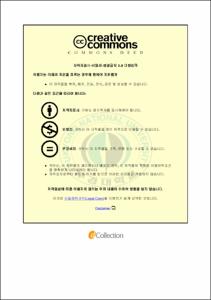Si3N4와 SiCf/SiC 복합재료의 트라이볼러지 및 탄성파 특성
- Alternative Title
- Characteristics of Tribology and Elastic Wave of Si3N4 and SiCf/SiC Composite
- Abstract
- The ceramics are classified into the functional ceramics and structural ceramics. Recently various components are being developed using structural ceramics, which are based on unique properties like lightness, heat resistance, corrosion resistance, abrasion resistance and rub resistance. Also the structural ceramics are being actively researched for the automobile components, but these components are pointed out the deficiency of mechanical characteristics which are demand on the working condition, and lack of reliability due to the brittle failure and economic efficiency so on. Generally the structural ceramics can be cracked during on machining, production and service, and furthermore the possibility of material destruction is highly increased when stress effect the defected area. Therefore it can bring about serious problem to material soundness. As mentioned above, if the crack which occurred during machining, production and in use is healed and the enough strength is recovered, we can secure the safety and improve the material reliability.
Wear test was investigated on Si3N4 ceramics with SiO2 nano-colloid added various amounts of the crack healing agent. Also, In view of using of high temperature, the mirror polished specimen with SiO2 nano-colloid coating heat treated at the temperature of 1273 K for one hour in air. These specimens heat treated at the temperature of 1073, 1273 and 1573 K for 10 minute in air, respectively, and wear test carried out. We also made SiC specimen and SiCf/SiC composite specimen, and then investigated the property of the wear and the acoustic waves the according to the direction of the fiber orientation when occurs wear and abrasion.
The room temperature result of Si3N4 ceramics has a friction coefficient about 1.0 and wear loss about 0.02 mm. Among these specimens, the test specimen added 1.3 wt% SiO2 nano-colloid indicates the best wear resistance because of its lowest friction coefficient and the smallest wear loss. In addition, this specimen shows the highest vickers hardness and bending strength. The friction coefficient has inverse proportion relation to the hardness and bending strength.
Si3N4 ceramics annealed at the 1073 ∼ 1573 K high temperature represented the behavior of abrasive wear, and the friction coefficient was proportional to wear loss. Smooth specimens without SiO2 nano-colloid have been showed the high bending strength, vickers hardness, and best wear resistance due to the lower friction coefficient. According to the SiO2 nano-colloid content and the temperature of heat treatment, hardness and high bending strength of Si3N4 ceramics was inverse proportion with the friction coefficient.
SiC specimen showed abrasive wear and SiCf/SiC composites was different in wear resistance according to the direction of the fiber orientation, and the friction coefficient and wear loss of perpendicular to the fiber direction showed the smallest value. The wear loss and wear coefficient was directly proportional. The results of the WT and frequency analysis showed that dominant frequencies by using acoustic emission test were 19.5, 39 and 58.6 kHz in SiC specimen and 117.2 and 136.7 kHz in SiCf/SiC composite, respectively.
- Issued Date
- 2011
- Awarded Date
- 2011. 2
- Type
- Dissertation
- Publisher
- 부경대학교
- Alternative Author(s)
- Chung, Young Kyu
- Affiliation
- 부경대학교 대학원
- Department
- 대학원 기계공학학ㆍ연협동과정
- Advisor
- 남기우
- Table Of Contents
- 제 1 장 서 론
1.1 연구배경 및 목적 1
1.2 마찰과 마모 4
1.2.1 마찰(friction) 5
1.2.2 마모(wear) 6
1.2.3 윤활(lubrication) 9
1.3 마모실험 10
1.4. 세라믹스의 마모기구(wear mechanism) 13
1.4.1 취성파괴(brittle fracture) 13
1.4.2 소성변형 (plastic deformation) 14
1.4.3 화학적 상호작용(tribo-chemical) 15
1.5 표면 거칠기 16
1.5.1 최대높이(Ry) 16
1.5.2 10점 평균 거칠기(ten point height of irregularity, Rz) 17
1.5.3 산술 평균 거칠기(Rq) 17
1.5.4 제곱 평균 거칠기(Rq) 18
1.6 세라믹스 마모 지도 19
1.7 첨단 세라믹스(advanced ceramics)의 마모 응용분야 21
1.7.1 내마모성 21
1.7.2 내식성 21
1.7.3 고온 내마모성 22
1.7.4 경량성 25
1.8 요약 26
참고문헌 27
제 2 장 SiO2 나노 콜로이드의 첨가량에 따르는 Si3N4의 트라이볼러지
2.1 서언 29
2.2 재료 및 실험 방법 30
2.2.1 시험편 및 상대재료 30
2.2.2 실험 방법 및 조건 32
2.2.3 탄성파 검출 33
2.2.4 웨이브릿 해석법 34
2.3 결과 및 고찰 35
2.3.1 표면거칠기 35
2.3.2 Si3N4 세라믹스의 마모거동 38
2.3.3 굽힘 강도와 내마모성 42
2.3.4 비커스 경도와 내마모성 44
2.3.5 SiO2 나노 콜로이드의 첨가량과 내마모성 46
2.3.6 탄성파 특성 48
2.4 요약 51
참고문헌 52
제 3 장 고온 열처리 된 Si3N4의 SiO2 나노 콜로이드 첨가량에 따른 트라이볼러지
3.1 서언 55
3.2 재료 및 실험 방법 56
3.2.1 시험편 및 상대재료 56
3.2.2 실험 방법 및 조건 56
3.2.3 탄성파 검출 56
3.2.4 웨이브릿 해석법 56
3.3 결과 및 고찰 57
3.3.1 표면거칠기 57
3.3.2 질화규소 세라믹스의 마모거동 61
3.3.3 고온 굽힘 강도와 내마모성 69
3.3.4 비커스 경도와 내마모성 72
3.3.5 SiO2 나노 콜로이드의 첨가량과 내마모성 74
3.3.6 탄성파 특성 77
3.4 요약 82
참고문헌 83
제 4 장 SiCf/SiC 복합재료의 트라이볼러지
4.1 서언 88
4.2 재료 및 실험 방법 89
4.2.1 SiCf/SiC 복합재 제작 89
4.2.2 마모시험편 및 상대재료 92
4.2.3 탄성파 검출 93
4.2.4 웨이블릿 해석법 93
4.3 결과 및 고찰 94
4.3.1 SiCf/SiC 복합재료의 마모 거동 94
4.3.2 탄성파 특성 105
4.4 요약 109
참고문헌 110
제 5 장 결 론 112
감사의 글 115
- Degree
- Doctor
- Appears in Collections:
- 대학원 > 기계공학학연협동과정
- Files in This Item:
-
-
Download
 SiC 복합재료의 트라이볼러지 및 탄성파 특성.pdf
기타 데이터 / 12.59 MB / Adobe PDF
SiC 복합재료의 트라이볼러지 및 탄성파 특성.pdf
기타 데이터 / 12.59 MB / Adobe PDF
-
Items in Repository are protected by copyright, with all rights reserved, unless otherwise indicated.